7 Preparing the WebLogic Server for JD Edwards EnterpriseOne HTML Server Installation
This section describes these tasks:
7.1 Start the WebLogic Administration Console
To start the WebLogic Admin Console:
-
Sign on as WebLogic Server user.
-
Change directory to:
<MW_HOME>/user_projects/domains/<yourdomain>/bin -
Start the WebLogic Admin Console by executing this script from the command prompt:
> ./startWebLogic.sh -
At the prompts, enter the Admin user and password for the WebLogic Admin Console.
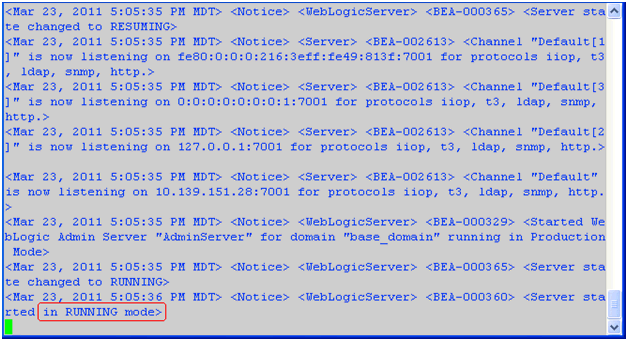
As indicated at the bottom of the above screen sample, when the console completes normally, the WebLogic Admin Console can be accessed after this message is displayed:
<Server Started in RUNNING mode>Caution:
The Admin Server Console will shut down if this process is closed. -
To access the WebLogic Admin Console, enter this URL into a browser such as Firefox or Internet Explorer:
http://<host>:<port>/console
For example:
http://your_machine_name:7001/console
The WebLogic Admin Console is displayed.
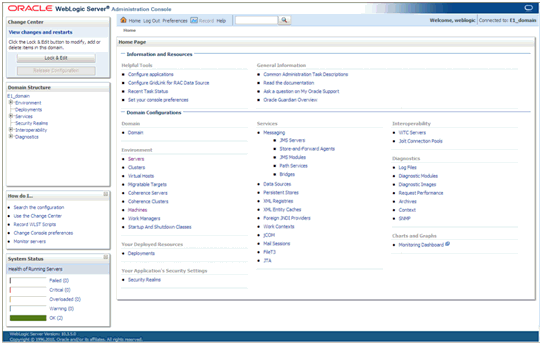
7.2 Start the Node Manager Manually
Note:
The JD Edwards EnterpriseOne Server Manager requires that Node Manager is running in order to start and stop managed servers. You can start Node Manager as a background process.To start the Node Manager:
-
Sign on as WebLogic user.
-
Change directory to:
Oracle WebLogic 12c
<weblogic_server_install_location>/user_projects/domains/<domain_name>/binOracle WebLogic 10.3.5 and 10.3.6
<MW_HOME>/wlserver_10.3/server/bin -
Start the Node Manager by executing this script from the command prompt:
> ./startNodeManager.sh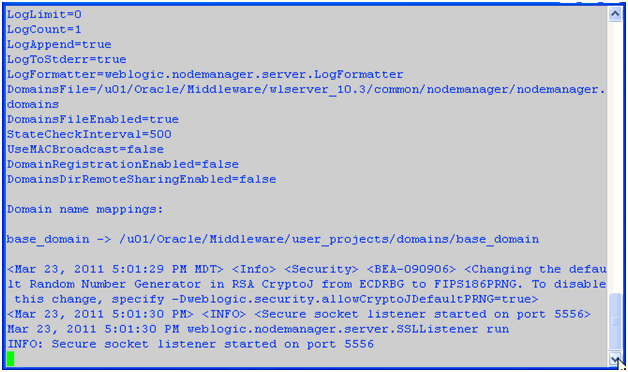
7.3 Create the Machine Definition
Caution:
JD Edwards EnterpriseOne Server Manager requires a Machine to be defined prior to creating a J2EE Server.Note:
You can skip this step if you have created the machine definition during the installation.To create the machine definition:
-
Open a supported web browser.
-
Open the Oracle WebLogic Admin Console using this URL syntax:
http://host:port/console -
At the prompts, enter the Admin user and password.
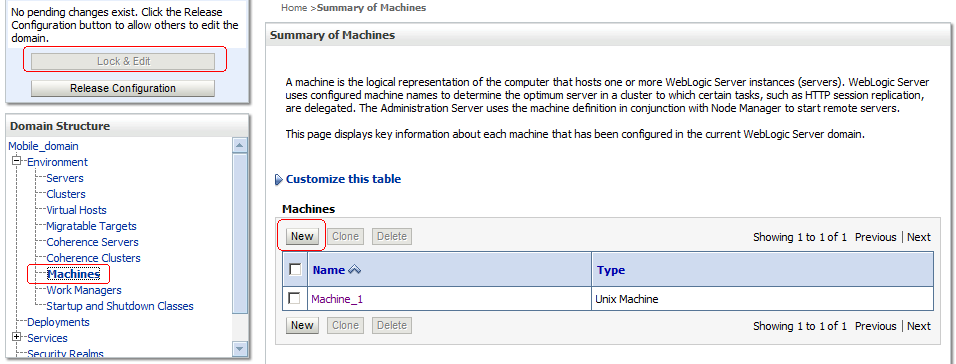
-
From the Domain Structure, navigate to Environment > Machines.
-
In the top-left Change Center pane, click the Lock & Edit button.
-
In the Summary of Machines pane, click the New button.
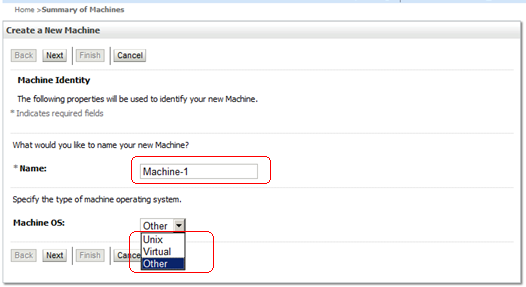
-
On Create a New Machine, enter the machine name in the Name field.
-
In the Machine OS drop-down menu, select the machine OS type. Use Other for Windows and other non-UNIX operating systems.
-
Click Next.

-
Accept the following default values for the Node Manager Properties:
-
(Protocol) Type = SSL
-
Listen Port = 5556
-
-
Click Finish.
-
In the Change Center pane, click the Activate Changes button.
7.4 Create boot.properties to Start and Stop Servers
If you need to keep the WebLogic Admin Server running, you can launch the start up process as a background process. In order to do that, you need to enter the admin user and password in a boot.properties file. As a result, the start up process uses the user and password from this file instead of prompting for it.
The boot.properties file contains two fields:
Caution:
You must enter these two parameters in lower case.-
username=
The default value for username is weblogic. You should change this value in this file to a valid value for your WebLogic Admin Server.
-
password=
The default value for username is welcome1. You should change this value in this file to a valid value for your WebLogic Admin Server.
The information entered is this file are encrypted after the first access. This file must be located in this directory:
<MW_HOME>/user_projects/domains/<your_domain>/servers/<server_name>/security
Note:
You might need to create the security directory if it does not already exist.After you create the machine and start the Node Manager, you can register the WebLogic Server and install the JD Edwards HTML Web Server instance as described in the JD Edwards EnterpriseOne Server Manager Guide.